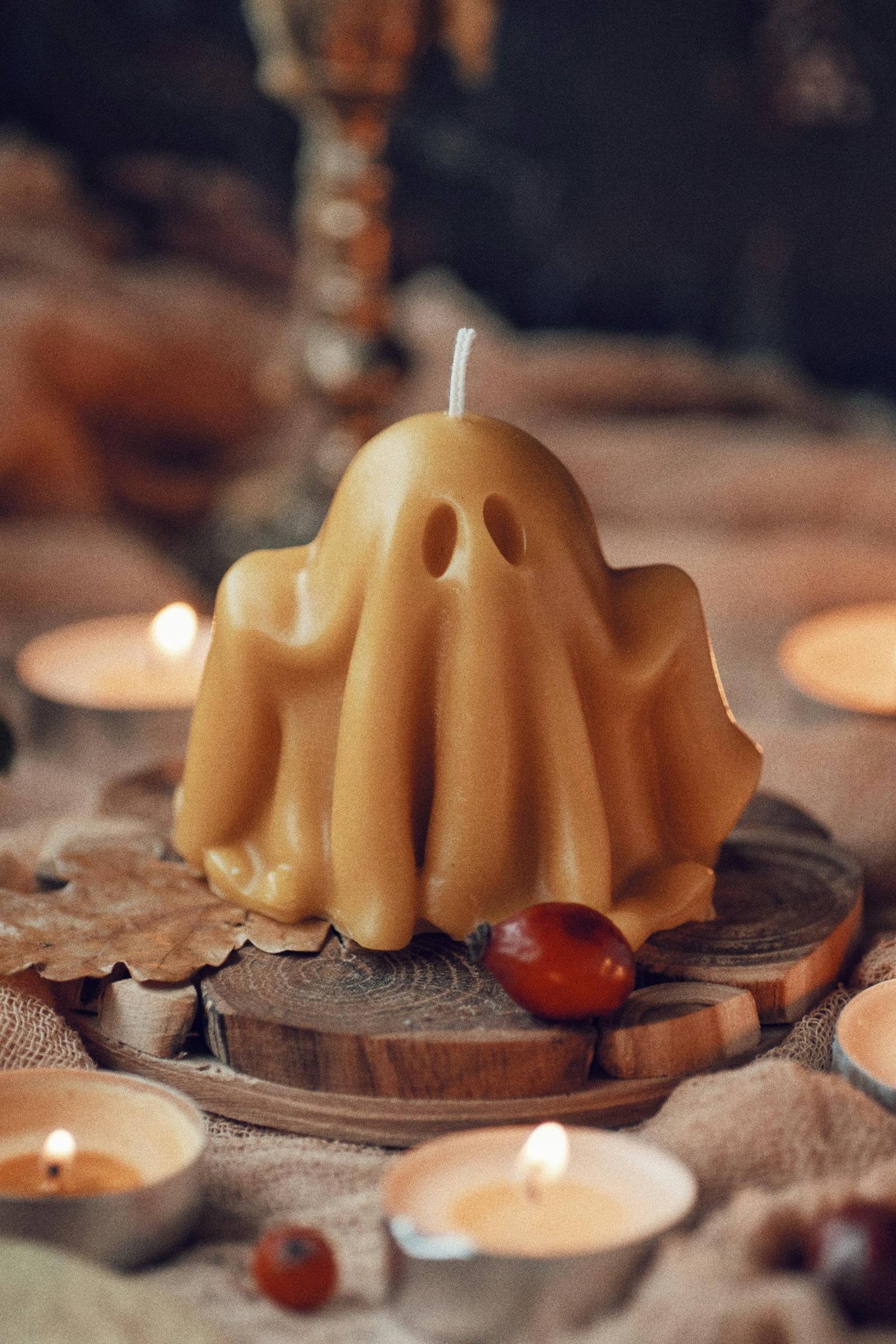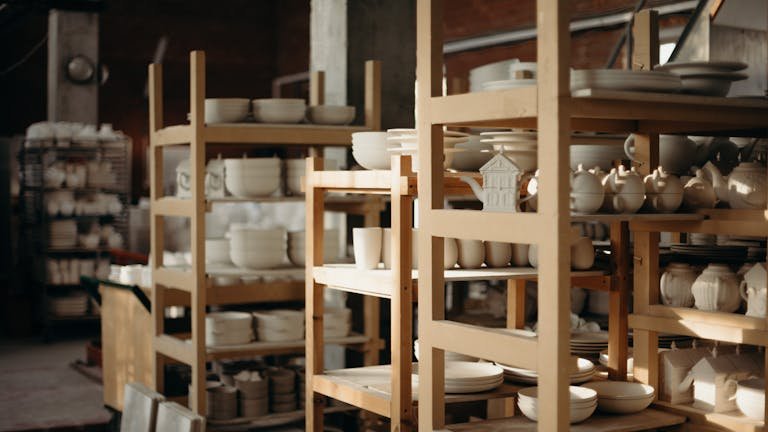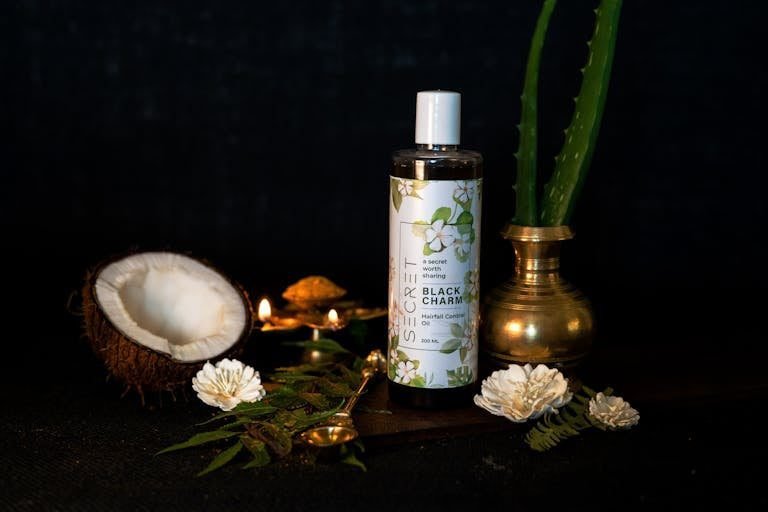What Is Candle Wax Made Of? Everything You Need To Know
Candle wax, an essential component of candles, is a fascinating subject that merges chemistry, artistry, and practical application. Understanding what candle wax is made of not only enhances your appreciation for candles but also helps you choose the right type for your needs.
In this blog, I will explore What Is Candle Wax Made Of? and their properties, and their uses.
Candle Wax
Candle wax is primarily composed of hydrocarbons, which are organic compounds made up of carbon and hydrogen atoms. These hydrocarbons can be derived from natural or synthetic sources. The specific type of wax used in a candle significantly affects its properties, such as melting point, burn rate, and fragrance retention. As a result, the choice of wax can impact the overall quality and performance of the candle.

Paraffin Wax
Source
Paraffin wax is one of the most widely used candle waxes, and it’s derived from petroleum. During the oil refining process, paraffin is separated from crude oil, purified, and then turned into wax.
Properties
- Melting Point: Paraffin wax has a relatively low melting point, which means it melts easily and can be poured into molds.
- Clean Burn: It burns relatively clean, though it does produce some soot.
- Fragrance Retention: Paraffin wax holds fragrance well, making it a great choice for scented candles.
Common Use
Paraffin wax is popular in mass-produced candles due to its affordability and versatility. You’ll often find paraffin wax used in everything from birthday candles to decorative jar candles. Its ability to hold colors and fragrances makes it a go-to material for many commercial candle manufacturers.
Beeswax
Source
Beeswax is a natural wax produced by honeybees. The bees secrete wax to build their honeycombs, and when the honey is harvested, the wax is collected as a by-product.
Properties
- High Melting Point: Beeswax has a higher melting point than paraffin, which leads to a longer burn time.
- Slow Burn: Because of its density, beeswax burns more slowly than many other waxes.
- Natural Scent: Beeswax has a naturally sweet, honey-like scent, even when not scented with any additional fragrance.
Common Use
Beeswax is often used in luxury candles, especially those marketed as organic or eco-friendly. It’s one of the oldest known candle materials and is still highly valued for its natural properties. Many people prefer beeswax candles for their long-lasting burn and subtle fragrance, making them perfect for a soothing atmosphere.
Soy Wax
Source
Soy wax is made from soybean oil, making it a renewable and environmentally friendly option. After soybeans are harvested, the oil is extracted and hydrogenated to create a solid wax.
Properties
- Renewable Resource: Since soybeans are a crop, soy wax is a renewable resource that can be grown again and again.
- Clean Burn: Soy wax burns cleanly, with little to no soot, making it a healthier option for indoor air quality.
- Fragrance Retention: Like paraffin, soy wax holds fragrance well, making it another good option for scented candles.
Common Use
Soy wax is popular among environmentally conscious consumers. It’s often used in candles that market themselves as natural, eco-friendly, or vegan. The clean-burning nature of soy wax also appeals to those who want a healthier candle-burning experience.
Palm Wax
Source
Palm wax comes from the oil of palm trees. It is another natural wax, but there has been some environmental controversy surrounding the sustainability of palm oil production.
Properties
- High Melting Point: Palm wax has a high melting point, leading to a slow and even burn.
- Slow Burn: It burns at a slower rate than many other waxes, giving it a longer-lasting flame.
- Fragrance Retention: Palm wax is excellent at holding fragrance, making it a popular choice for scented candles.
Common Use
Palm wax is often used in candles that are designed to have a longer burn time. It’s also favored for its crystallized or feathered appearance, which gives candles made from palm wax a decorative edge. However, if you’re concerned about sustainability, it’s important to look for palm wax from certified, sustainably managed sources.
Coconut Wax
Source
Coconut wax is derived from coconut oil. Like soy wax, it’s considered a renewable and natural option for candle making.
Properties
- Hard Texture: Coconut wax is a relatively hard wax, which allows it to maintain its shape well.
- Clean Burn: It burns cleanly, producing minimal soot and residue.
- Fragrance Retention: Coconut wax holds fragrance exceptionally well, often enhancing the scent’s throw (how far the scent travels in a room).
Common Use
Coconut wax is a favorite in luxury candles and natural candle lines. It’s often blended with other waxes, such as soy or beeswax, to create a longer burn time and enhance fragrance performance. Its natural scent also pairs well with essential oils, making it popular in aromatherapy candles.
Gel Wax
Source
Gel wax is a unique type of wax made from a combination of polymer resin and mineral oil. It’s not actually a traditional wax but is categorized as such due to its use in candle making.
Properties
- Clear Appearance: Gel wax is transparent, allowing for creative and decorative candle designs.
- Slow Burn: Gel wax burns slowly, sometimes even slower than beeswax or palm wax.
- Fragrance Retention: Gel wax holds fragrance well, similar to other waxes.
Common Use
Gel wax is often used in container candles that feature decorative elements, such as embedded items or layered designs. Its clear appearance allows for a lot of creative freedom in how the candle looks, which makes it popular for novelty or artistic candles.
Other Wax Types
Microcrystalline Wax
Source: Microcrystalline wax is a type of petroleum-derived wax, similar to paraffin but with a finer crystalline structure.
Properties:
- It has a higher melting point than paraffin.
- Microcrystalline wax is often used for its smooth, glossy finish.
Common Use: This wax is used as an additive in candles to create a more refined finish or to help harden softer waxes like soy.
Bayberry Wax
Source: Bayberry wax is a natural wax made from the berries of the bayberry shrub.
Properties:
- It has a distinctive, natural scent that is slightly fruity.
- Bayberry wax burns cleanly but is more expensive than most other wax types.
Common Use: Bayberry wax is often used in holiday candles, as it has a long history in traditional candle making, especially in colonial America.
Carnauba Wax
Source: Derived from the leaves of the carnauba palm tree, this wax is often used in a variety of industries beyond candle making.
Properties:
- Carnauba wax is one of the hardest natural waxes, known for its high gloss and durability.
Common Use: While it’s not a primary candle wax, it’s sometimes added to candles to give them a glossy finish or to help harden the wax for pillar candles.
Read Also: DIY Candle Magic: Craft Your Perfect Fragrance Oil
Final Words
Candle wax comes in a variety of types, each with unique properties that affect how a candle burns, how it holds fragrance, and even how it looks. From paraffin wax, the industry standard, to eco-friendly options like soy, palm, and coconut wax, there’s a wax for every type of candle and every preference. Whether you’re lighting a beeswax candle for its natural scent or enjoying a soy candle for its clean burn, the choice of wax can make a big difference in your candle experience.
Understanding the different types of candle wax can help you make better purchasing decisions, whether you’re looking for sustainability, long-lasting burn times, or a specific aesthetic.







